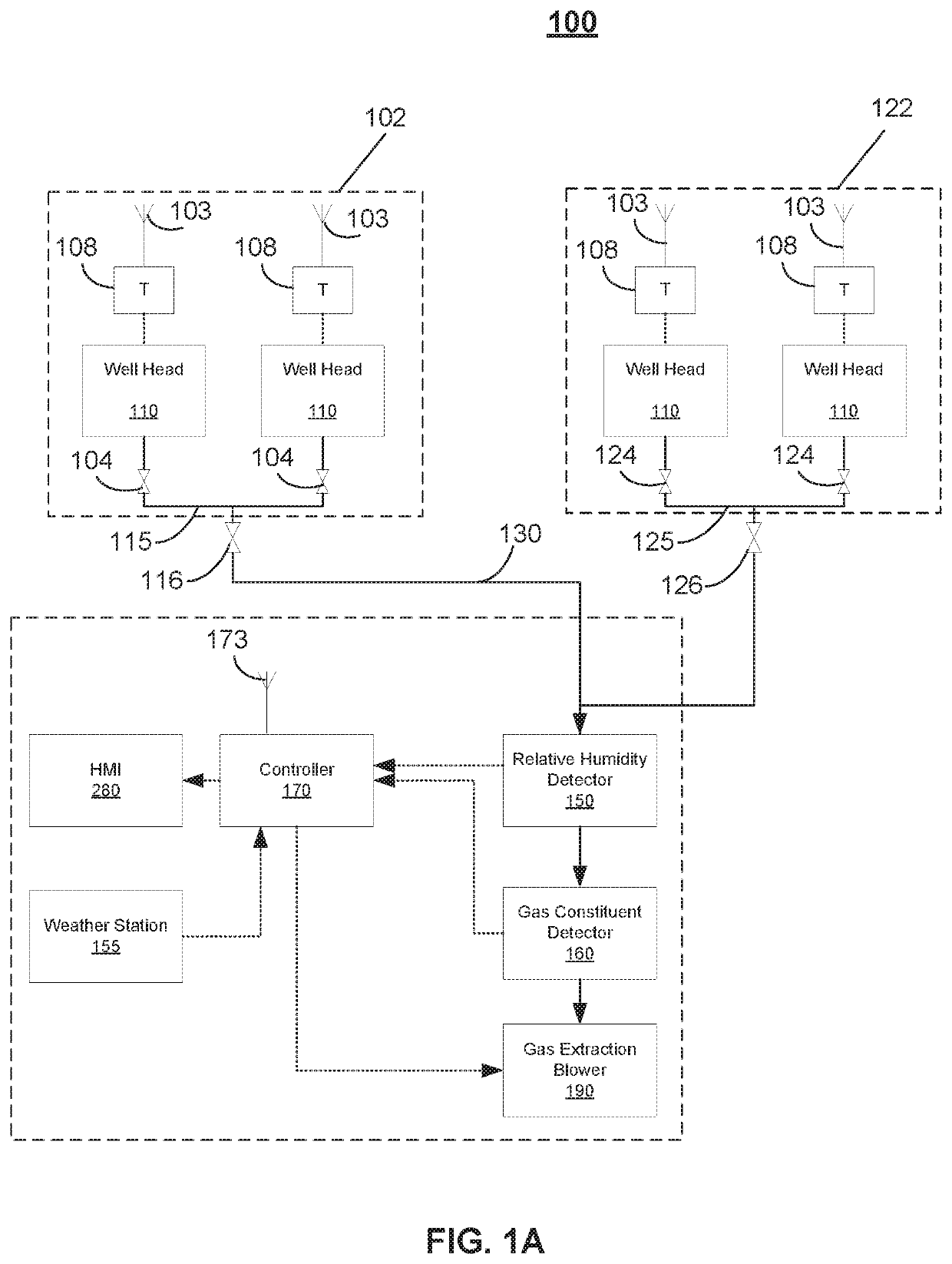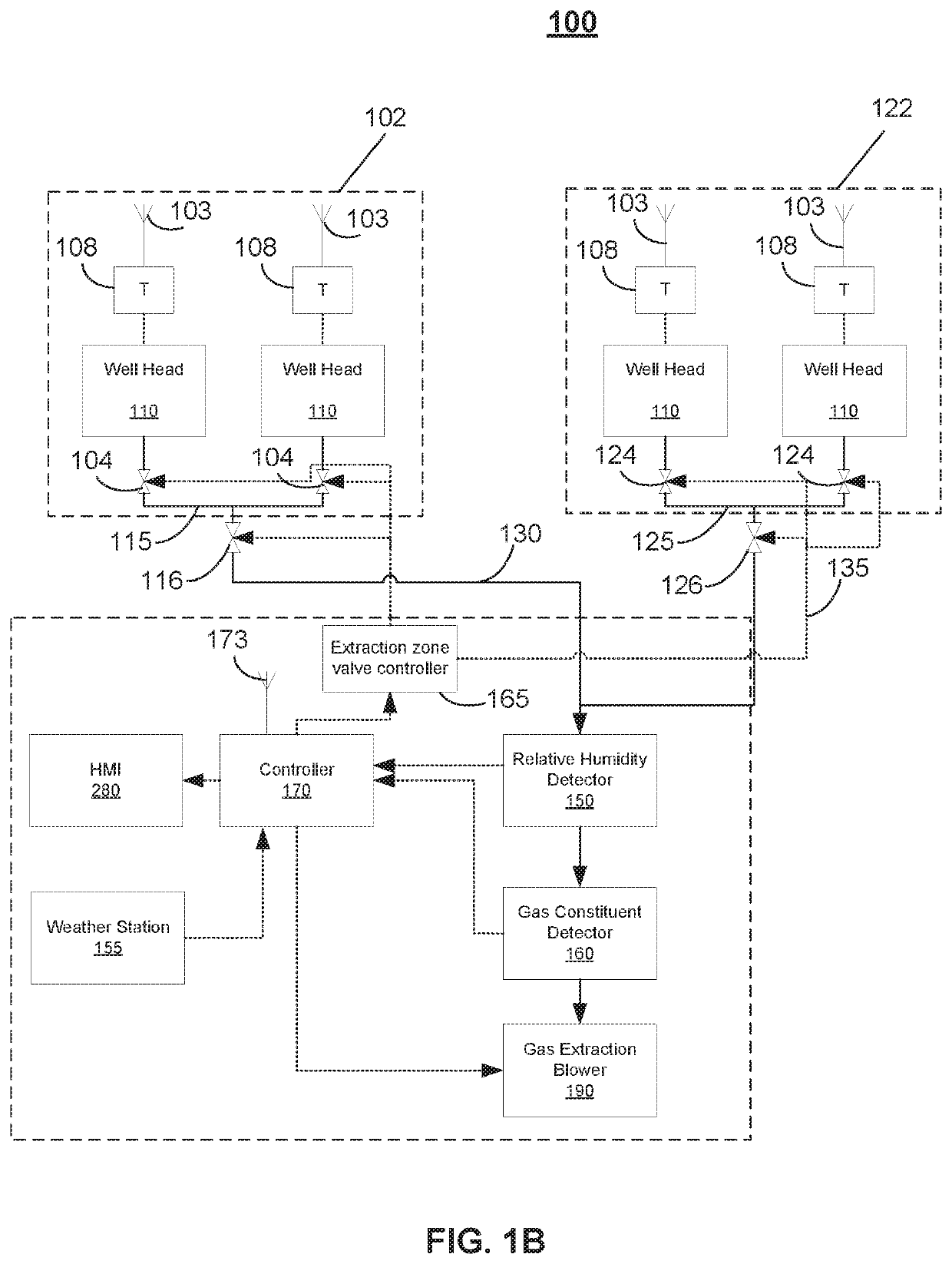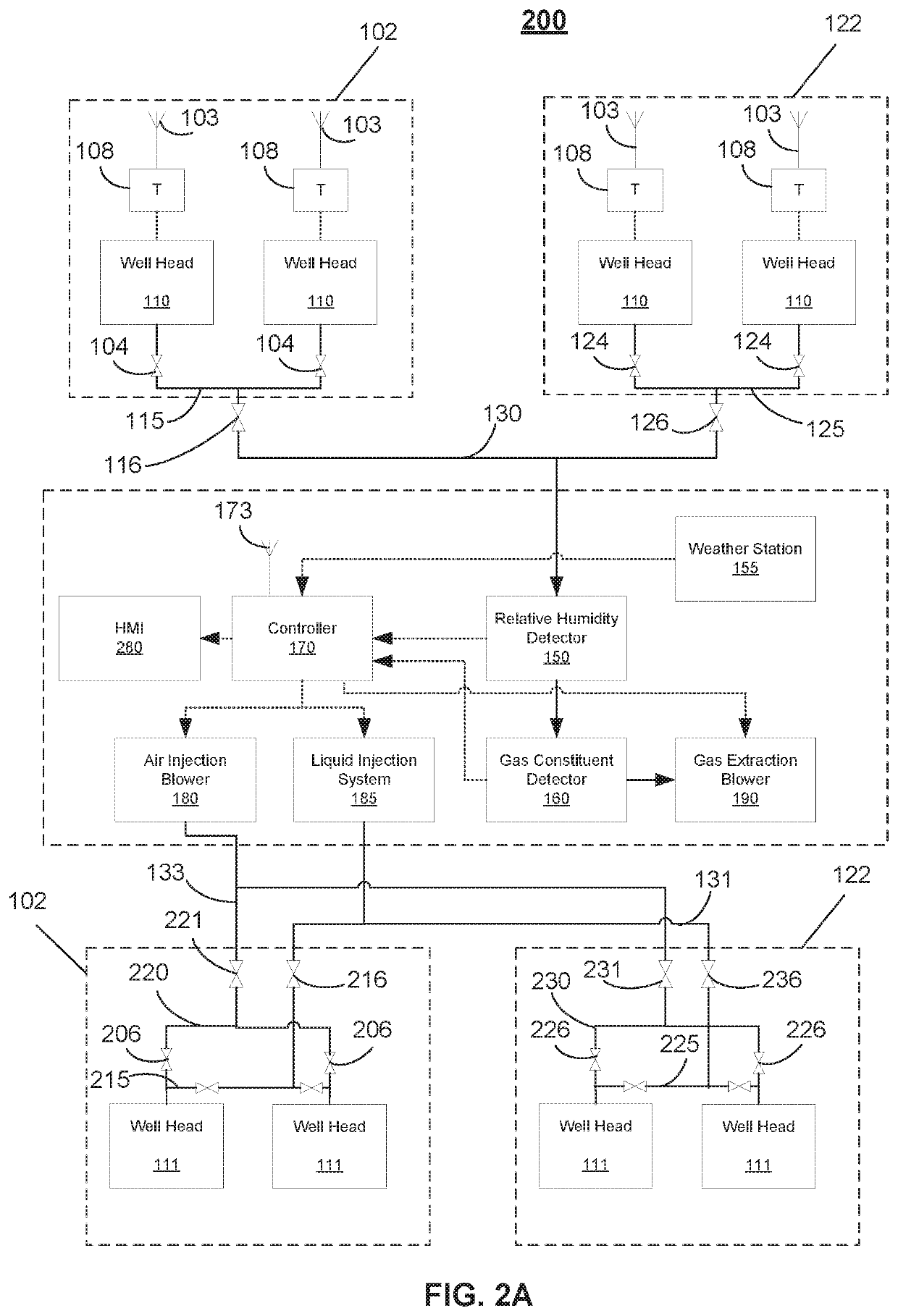System and methods for monitoring and controlling an aerobic landfill bioreactor
a landfill bioreactor and aerobic technology, applied in the field of aerobic landfill bioreactors, can solve the problems of organic waste degradation in a conventional anaerobic landfill that can take over 150 years to reach completion, and does not include the collection of landfill gases, so as to increase the flow of air and reduce the flow of air
- Summary
- Abstract
- Description
- Claims
- Application Information
AI Technical Summary
Benefits of technology
Problems solved by technology
Method used
Image
Examples
Embodiment Construction
[0051]In view of the problems discussed in the background, it is therefore an object of this disclosure to provide for systems and methods to monitor the operation of an aerobic landfill bioreactor by accurately measuring the main operating conditions identified earlier, namely: temperature, moisture content, and gas constituent concentrations. It is another object of the present invention to provide for systems and methods to optimize the injection of air and liquid into an aerobic landfill bioreactor while maintaining the aforementioned operating conditions in optimal ranges. It is yet another object of the present invention to provide for systems and methods to facilitate the degradation of the labile organic fraction of the municipal solid waste in a landfill while avoiding methane production and minimizing or eliminating leachate production.
[0052]In this disclosure, the following terms may be used interchangeably: aerobic bioreactor, aerobic landfill bioreactor, aerobic landfil...
PUM
| Property | Measurement | Unit |
|---|---|---|
| stabilization time | aaaaa | aaaaa |
| temperature | aaaaa | aaaaa |
| temperature | aaaaa | aaaaa |
Abstract
Description
Claims
Application Information
 Login to View More
Login to View More - R&D
- Intellectual Property
- Life Sciences
- Materials
- Tech Scout
- Unparalleled Data Quality
- Higher Quality Content
- 60% Fewer Hallucinations
Browse by: Latest US Patents, China's latest patents, Technical Efficacy Thesaurus, Application Domain, Technology Topic, Popular Technical Reports.
© 2025 PatSnap. All rights reserved.Legal|Privacy policy|Modern Slavery Act Transparency Statement|Sitemap|About US| Contact US: help@patsnap.com



